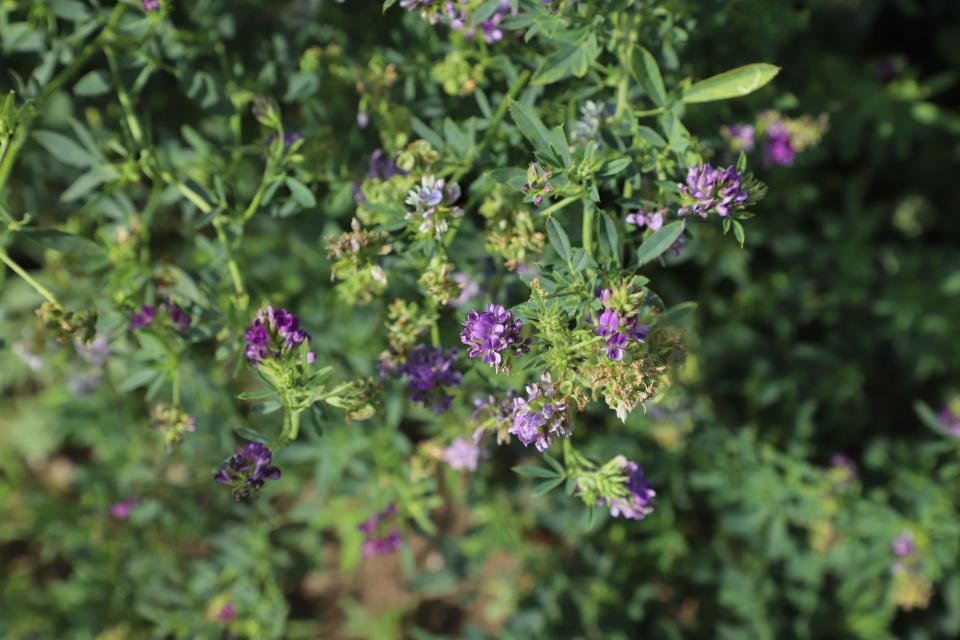
Pasture and Forage Minute: Assessing Alfalfa and Fertilizer Needs
Evaluating Alfalfa Stands
By Ben Beckman
Were you expecting more from last year’s alfalfa yields? Did your plants get enough time to winterize in the fall or are you concerned about winter kill? Evaluating your alfalfa stand in the spring is key to planning management and setting expectations for this year.
A hay square is a quick and easy way to begin evaluation. While we call it a hay square, square or circle shapes work equally well. A 17x17 inch square or 19-inch in diameter circle are the size we need.
Next, we need to determine what to count. There are two options when evaluating your stand: 1) by the number of plants per square foot (typically recommended for new stands, like plantings last fall) and 2) by the number of stems for established stands. Stem count more accurately predicts yield compared to plant number. However, either method will provide information for making management decisions.
Pick four to five random areas in your field to sample. Then count the plants or stems that would be harvested, typically anything over 6 inches, to determine your count. Then divide those numbers by two to get stems or plants per square foot. For established stands, having four to five healthy plants per square foot or 55 stems per square foot would warrant a productive and healthy stand. Stem counts below 55 see a significant decrease in dry matter production.
For stands planted last fall, you will see more plants per square foot compared to stems. Remember, that a good rule of thumb is, for every pound of seed planted, expect three to five plants. New plantings that contain fewer than 12 plants per square foot may need to be reseeded.
Fertilizing Cool Season Grass Pastures
By Brad Schick
Fertilizing cool season grass is something many producers do each year, but one should consider forage needs, the value of the forage and fertilizer costs.
Fertilization of smooth bromegrass pastures should occur late March through April. If the nitrogen is a single application, usually between 80 to 100 lbs. of actual N per acre is suggested for eastern Nebraska. The recommended application rate declines westward across the state with about 30 to 40 lbs. N per acre suggested for the Panhandle.
If doing split applications, usually it's 2/3 in the spring and 1/3 in the fall when growth resumes on the cool season grasses. With fertilized pasture, be sure to include a rotational grazing plan that will effectively harvest the extra forage and provide the greatest return on the fertilizer investment.
Something to consider when deciding to fertilize cool season grass pastures — or any pasture for that matter — is that during drought years the forage quality might still be very high even though yield might be reduced.
Work done in Eastern Nebraska has shown a 30% increase in forage yield with fertilization and the economic optimum is between 80 to 120 lbs. per acre of actual N. A crude protein increase from 16 to 20% was seen with fertilizer applications up to 160 lbs. That is a lot of fertilizer, but it did increase crude protein and organic matter digestibility while decreasing NDF or neutral detergent fiber. Always use best management practices when applying fertilizer especially in pastures and fields near water sources such as ponds. Assure phosphorous and potassium levels are adequate for forage as well.
Brome pastures are hardy and we can and do graze them hard in Nebraska. Haying or grazing operations can benefit if managed correctly with fertilizer.
Online Master of Science in Agronomy
With a focus on industry applications and research, the online program is designed with maximum flexibility for today's working professionals.
